
Past Event
Foundation
Forgotten Traces
August 4 → September 3, 2023
The exhibition marks the end of Wickramasinghe and Brisson-Darveau’s PHI Montréal public engagement residency, realized between September 2022 and June 2023
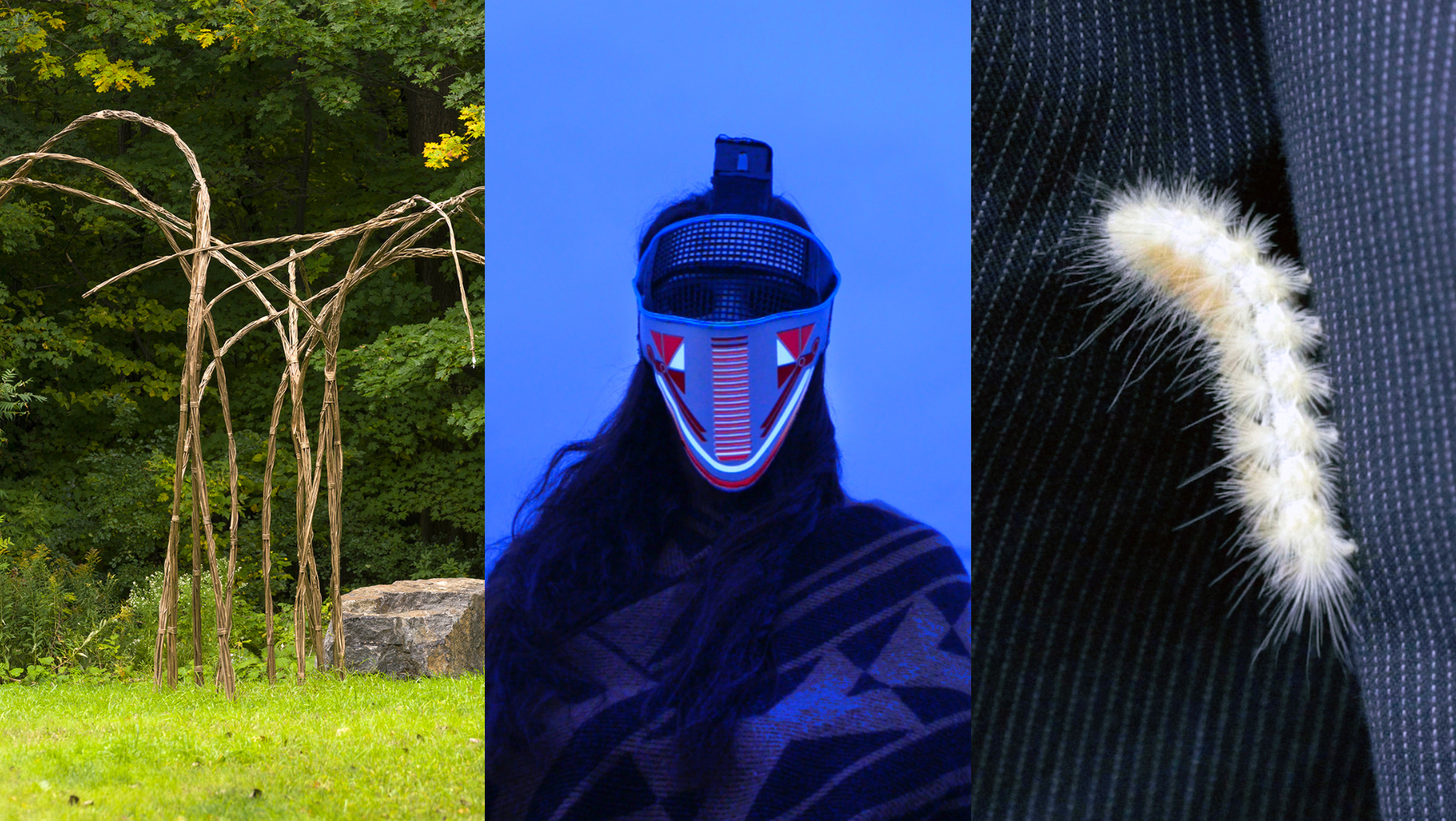
PHI Foundation
465 Saint-Jean Street
G5 Space
Montréal, Québec H2Y 2R6
Event Series ↗
August 16—27, 2023
Video Program ↗
August 16—27, 2023
From 12 PM to 6 PM
Free admission
• The wearing of masks is no longer mandatory.
• Masks are at your disposal, if desired.
• Gel hand sanitizing stations.
If you have symptoms associated with COVID-19, please postpone your visit.
Before visiting, please review all essential information about the visit, including details on accessibility at the Foundation.
The Education Department offers on-site group visits and online virtual animations for school, academic, community, language school and general public groups. The group visit can be combined with a creative workshop. To make a reservation for your group, please fill our online form.
The visit includes three exhibitions:
• Inhabiting the Imaginary by Moridja Kitenge Banza
• Forgotten Traces by Amélie Brisson-Darveau and Pavitra Wickramasinghe
• REMEMBER, PERFORM, FORGET: Binding Space Through Utopia
The online version of the print program is available.
The notion of public art is a utopian and contradictory concept that can only be achieved through extraordinary circumstances, as it is meant to be fully public, made by the people, for the people, as Lucy Lippard wrote in her 1977 essay, “Art Outdoors, In and Out of the Public Domain.” [1] At that time, only one example had achieved this democratic form of art, which will be presented as part of this program of events in the film Brigada Ramona Parra (1970). It encapsulates a political utopia at a given moment that will serve as the basis for an ideal political climate for this project. Is art best created under certain political conditions?
REMEMBER, PERFORM, FORGET: Binding Space Through Utopia is a program of gatherings with Kerstin Honeit, The Society of Affective Archives, and Rodolfo Andaur, that is grounded in historical references that problematize the notion of place and public art. In particular, this includes the issues of governance, freedom, gender inequality, accessibility, the permanence of objects, the ephemerality of collective memory, and the documentation and preservation of past events. Is it possible to preserve only through the performance of oral tradition? Do we rely more on objects than people to solidify a collective memory? These references will be examined in the presentation of a series of videos that groups archival and art video works that articulate history as well as a conception of the future.
Through the presentation of a series of videos, and various events comprising artist talks, publication launches, and outdoor activities, the program invites us to envision the notion of place and the role of public art through the lens of an idealized political climate wherein we can evolve. These issues are challenged by The Society of Affective Archives, Kerstin Honeit, and Rodolfo Andaur’s practices. They will each relate their research to their respective locations—Montréal being a connecting site for them— as well as their respective cultural and artistic backgrounds. What is made of a place is what the public makes of it: we build, reject, and create our own freedoms and powers. Through different narratives, words, actions, and curation, there will be a sharing of perspectives on how ecologies and economies are partly cherished and demonized. Ultimately, this program asks: can public art belong to everyone, and how do we inhabit spaces to make them ours?
Curated by Victoria Carrasco
1. Lucy R. Lippard, “Art Outdoors, In and Out of the Public Domain,” Studio International 193, no. 986 (March/April 1977): 84.
In her essay, Lippard states numerous times that public art does not exist under the idea of what public art really is, as it is supposed to partly fulfill the social needs of a specific environment and aesthetic intent of the artist. Lippard says of the most successful example: “Nothing has responded better to these needs in American cities than the burgeoning mural movement, modelled in part of the Chilean mural brigades, whose effectiveness was proven by the Junta’s haste to erase them when Allende’s government was overthrown.”
This program is made possible thanks to The Institute for Curatorial Practice in Performance (ICPP) Leadership Fellowship with support from the Ford Foundation. We would like to thank the National Film Board of Canada (NFB) for generously providing us with these films, as well as the Goethe-Institut Montreal for their support.
The archival portion of this video program foregrounds issues of place and public art, such as: the influence of modern art on gender disparity and the inclusion of international artists; the lack of context and documentation of public art; and a new way to think about territory. Central to this portion are the documentaries Brigada Ramona Parra and Jacques Giraldeau’s La forme des choses, which tie Lucy Lippard’s idea of utopian public art in 1970s Chile together with the experiment of an outdoor public art symposium [1] that left its remains on the Mount Royal in Montréal.
Other documentary pieces like Jean Palardy’s Artiste à Montréal showcase a productive era in terms of Montréal DIY spaces in the 1950s, as well as the influences of modernity on art practices, including public art. French and English collide in this film, and for a few minutes we see a young Armand Vaillancourt sculpting L’Arbre de la rue Durocher (1953–1956), which is part of the permanent collection of the Musée national des beaux-arts du Québec.
On a contemporary front, L’étreinte des temps by Maxime Pelletier-Huot is an archive of the work behind the sculpture of the same name, one of the first public art pieces produced by women to be installed on the Mount Royal mountain since the symposium in 1964. Finally, the documentary Managing Displacements from Geography documents an exploration trip through the Atacama Desert, directed by Chilean curator Rodolfo Andaur, who leads with an education and exchange process encounters and builds parallels with other countries and contexts.
The second portion of the program, titled Futures presents feminist perspectives—long excluded from public art—contextualizing spaces and histories, and challenging political and social issues of class, memory, nature, and feminism. Recalling Brigada Ramona Parra, Madre Drone by Patricia Domínguez juxtaposes various layers including the natural disasters in Brazil and Bolivia in 2019, when Chile was boiling with protests that would lead to a change of government and rewriting the constitution.
Farming by Alanis Obomsawin and Patagonian Orchids: Letter to Chile by Pilar Quinteros show exploitative traditional practices, prompting existential questions about land. The Pavilion by Jasmina Cibic is the reconstruction of an image of the Pavilion of the Kingdom of Yugoslavia, originally built in Barcelona for the 1929 World Exposition, and then rebuilt through a performance by women. Kerstin Honeit offers an alternative voice, a missing Herstory, on social issues in relation to historical preservation in my castle your castle and [ˈzi:lo]5, a video created in Montréal on the abandoned Silo #5 structure, built in the 1900, Honeit reproduces repetitive gestures through a performance of conservator tasks from landmark archives. Ultimately, maybe we can arrive there / 或许我们可以到那里 by Yutong Lin underlines the power of memory through a personal situation. Reading and the power of words challenge preservation for people and places.
Finally, the documentary Yo He Sido, Yo Soy, Yo Seré [I Was, I Am, I Will Be] will be presented. The documentary, produced by Heynowski & Scheumann, is a rare record of what happened in the concentration camps of Chacabuco and Pisagua, during the 1970s dictatorship in Chile.
1. In 1964, the Montréal International Sculpture Symposium took place on Mount Royal. 12 international artists and two Canadians, one of which was the only woman to be included, were selected to produce a sculpture onsite as part of the symposium, transforming the glades on the mountain into an open studio. Canadian public art in its early years was prominent and mostly male-dominated, modern, and internationally focused.
Articulation of an archive (73 min)
12 PM and 3PM
• Brigada Ramona Parra, Álvaro Ramírez, 1970, 12 min, Spanish
• La forme des choses, Jacques Giraldeau, 1965, 10 min
• L'étreinte des temps, The Society of Affective Archives and Maxime Pelletier-Huot, 2018, 17 min, French
• Artiste à Montréal, Jean Palardy, 1954, 29 min, English, French subtitles
• Managing New Displacements from Geography, 2018, 4 min 14 s, Spanish, English subtitles
Futures (74 min)
1:30 PM and 4:30 PM
• my castle your castle, Kerstin Honeit, 2017, 15 min, English
• Madre Drone, Patricia Dominguez, 2019–2020, 20 min 51 s
• The Pavilion, Jasmina Cibic, 2015, 6 min 43 s, English
• Farming, Alanis Obomsawin, 1975, 3 min
• Patagonian Orchids: Letter to Chile, Pilar Quinteros, 2020, 5 min 11 s, Spanish, English subtitles
• maybe we can arrive there / 或许我们可以到那里, Yutong Lin, 2023, 9 min, Nakhi and Yunnan Mandarin, English subtitles
• [ˈzi:lo]5, Kerstin Honeit, 2019, 15 min, English
PHI Foundation, 465 Saint-Jean Street
Free admission · No reservations required
Curator Rodolfo Andaur presents his latest book, Territorios Transformativos 2010-2020 which reunites 57 texts and more than 100 artworks that, through their artistic practices, promote territoriality from out of the center of Chile. Andaur will discuss his curatorial practice and the project supporting the book, Managing New Displacements Through Geography.
Location: Mount Royal glades
Free admission · Reservations required: [email protected]
Andaur offers a territorial research of the Mount Royal glades. Participants are invited to use their senses through listening, talking, creating, and sharing together.
Note that the event will take place in various languages.
PHI Foundation, 465 Saint-Jean Street
Free admission
In the spring of 2018, a new permanent artwork was installed on Mount Royal for the first time in half a century. Created by three artists of different cultural backgrounds, the sculpture L’étreinte des temps gives voice to the heritage of the mountain: it evokes the site’s history and draws on ancestral knowledge. The film takes viewers through the production of the project and unveils the mysterious and captivating process of transforming an organic material into a bronze sculpture. Annis and La Perrière M. of The Society of Affective Archives take us through their journey, elaborating on this artwork and its life after 2018.
PHI Foundation, 465 Saint-Jean Street
Free admission
Based on first excerpts from her latest video work (still in progress), THIS IS POOR! Patterns of poverty, Kerstin Honeit will talk about architectures of storage and the recurring topics in her artistic research: work, voice, and gestures of drag.
In her videos, Honeit addresses, among other things, architecture as a storage medium for various hegemonic constructions. In this respect, my castle your castle (2017) depicts the construction site of the Berlin City Palace—which was re-erected on the foundation of the demolished Palace of the Republic (the parliament building the East Germany)—as a stage. The video uses the example and background of the controversial project to formulate questions about the social architectures behind the spaces and their historical invocations. In Honeit’s work [ˈzi:lo]5 (2019), Montréal’s gigantic silo complex is the starting point for reflections on the politics of preservation, which are staged in the video. A critical voice-over chorus narrates through different types of storage sites with their collections and accumulations, which, upon closer inspection, reveal themselves to be agglomerations of voids and omissions.
Location: Tiohtià:ke Otsira'kéhne Park
Free admission · Reservations required: [email protected] (please choose your path in your reservation)
Path A
Meeting at 2:15 PM:
• Meet-up point: view on Google Maps
• Path difficulty level: intermediate (steep uphill and downhill path)
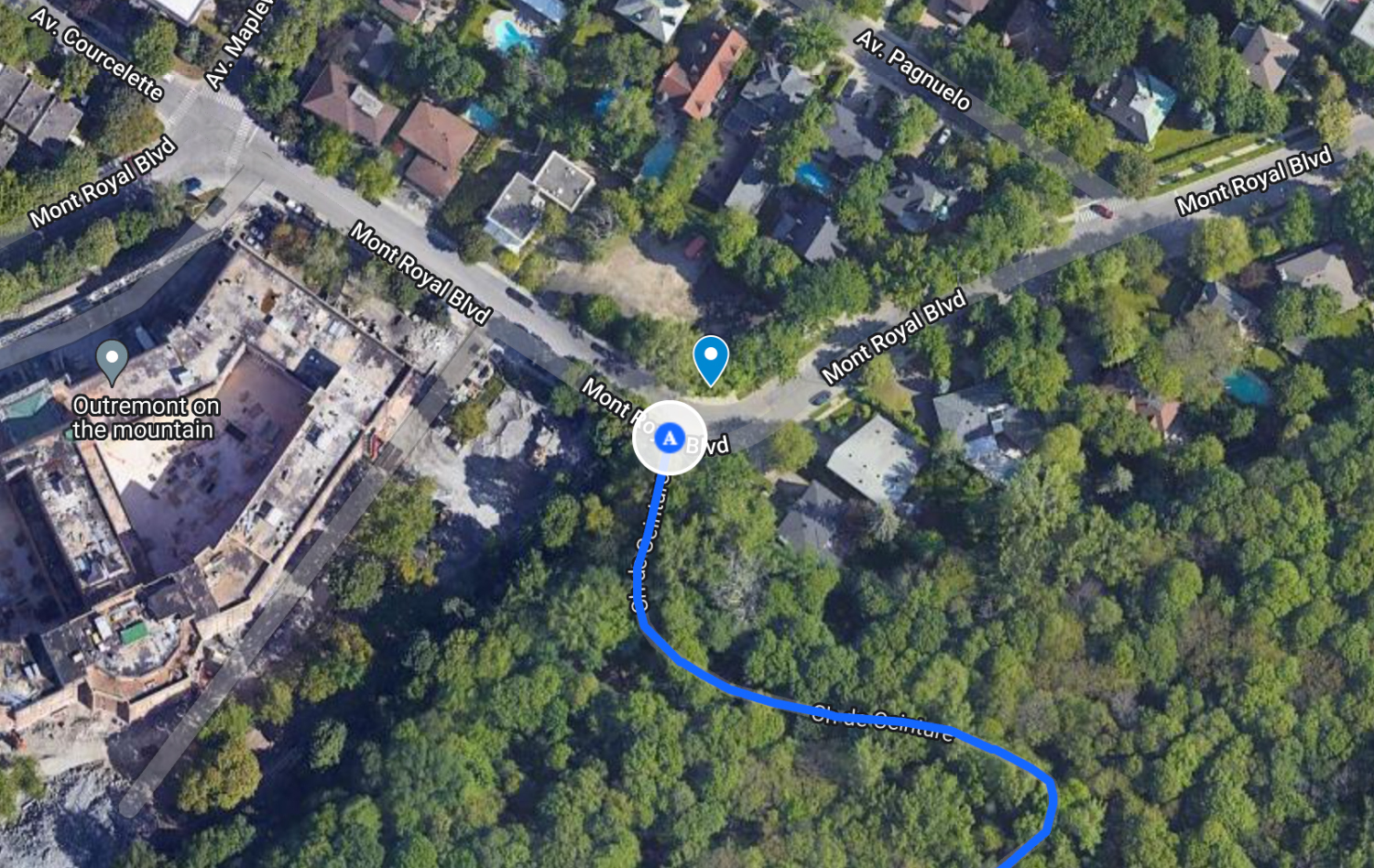
Path C
Meeting at 2:40 PM:
• Meet-up point: view on Google Maps
• Path difficulty level: easy (recommended uphill path for people with reduced mobility)
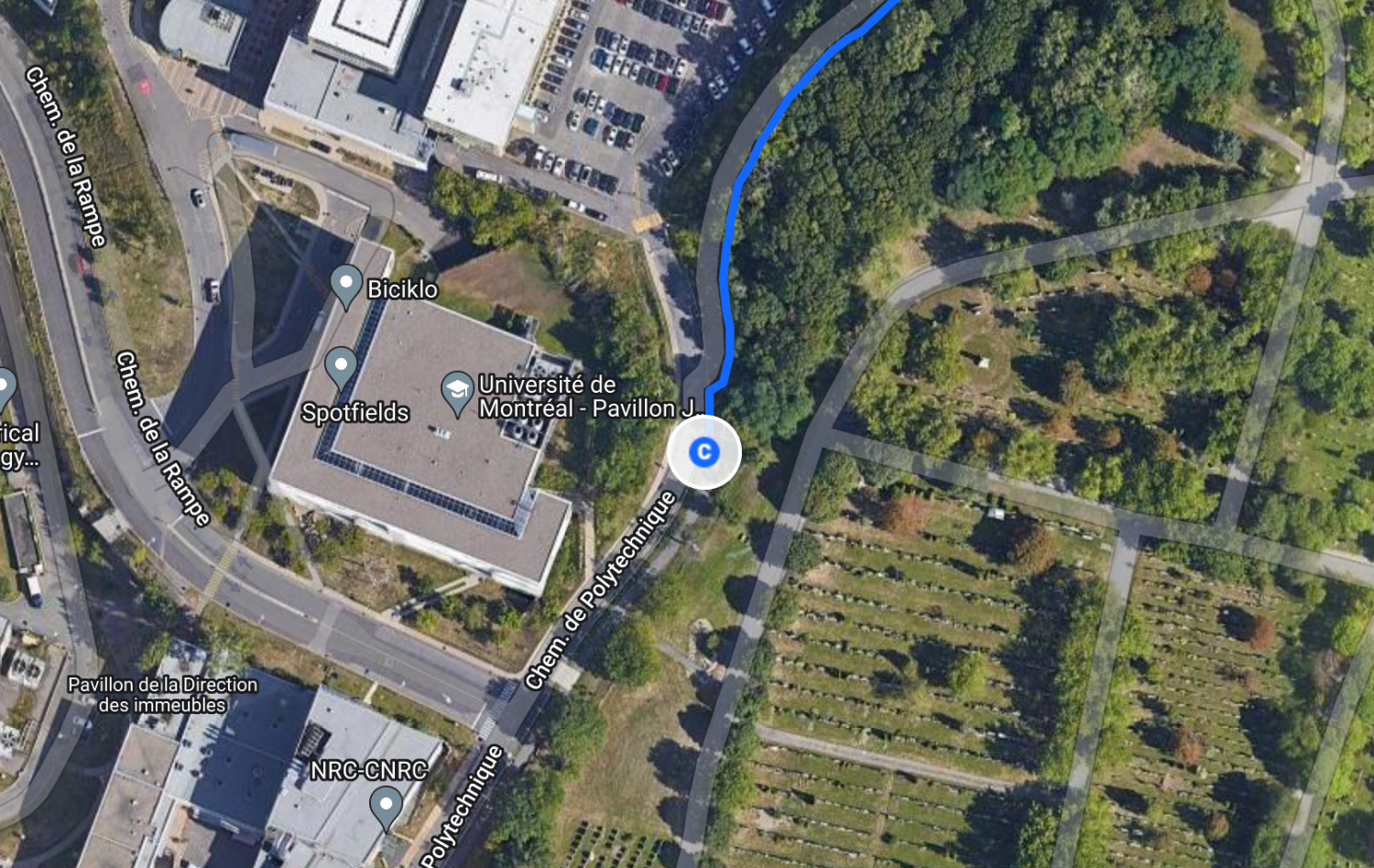
Situated in the heart of Tiohtià:ke island (also known as Montréal, Canada), the Mount Royal park has been known since time immemorial as a site of meetings, exchanges, and contemplation. Ancient graves, as well as a contemporary cemetery, testify to the sacred nature of this territory. In the spring of 2018, the Mount Royal park welcomed a new permanent public artwork for the first time in half a century. Created by three artists of different cultural backgrounds, the sculpture L’étreinte des temps gives voice to the heritage of the mountain by evoking the history of the site and drawing inspiration from ancestral knowledge. Inspired by the form and medicinal properties of the willow tree (an ancient remedy against pain), L’étreinte des temps is an invitation for the present moment to join with and protect all the yesterdays and tomorrows.
PHI Foundation, 465 Saint-Jean Street
Free admission
The documentary Yo He Sido, Yo Soy, Yo Seré [I Was, I Am, I Will Be] will be presented as a stand alone screening event. The documentary, produced by Heynowski & Scheumann, is a rare record of what happened in the concentration camps of Chacabuco and Pisagua, during the 1970s dictatorship in Chile.
Rodolfo Andaur is a visual arts curator and cultural manager. He studied journalism and holds an MA in Art History. He has worked on directing, promoting, and diffusing transdisciplinary projects. Furthermore, Andaur has taken part in curatorial teams that focus on critical analysis and reflection about the anthropocene, climate change, and eco-geopolitics in Latin America. Not only do those proposals produce knowledge through the visual arts, they have also contributed to the dissemination of renewed thoughts on research into unknown territories. With this background his work has been prized both by the Tarapacá Regional Government for his contribution to cultural management (2011), and for his participation in the international project called “Examples to Follow: Expedition in Aesthetics and Sustainability” (2017). He has been involved in curatorial residencies in Brazil, Denmark, Germany, México, Morocco, New Zealand, Poland, Scotland, Singapore, Spain, South Korea, and the United States. Andaur is currently a columnist for several online art magazines, and is a visiting lecturer for certain universities and art institutions.
Kerstin Honeit is a Berlin artist who works with experimental documentary moving image formats. In her videos, she researches mechanisms of representation within hegemonic visual worlds and, above all, cultural and linguistic modes of translation in cinematography. Her focus is on the politics of the (film) voice and, in particular, on how the voice, as a queering event between moving images, can shake up the gaze regimes of the dominant culture. Last year, against the background of Honeit’s moving-image-practice, the monograph Kerstin Honeit. Voice Works / Voice Strikes was published by b_books. Honeit has taught at various art colleges and currently shares a professorship with Candice Breitz at University of Arts Braunschweig. Her work is regularly presented internationally at film festivals and exhibitions, including: Whitechapel Gallery, London; Hammer Museum, Los Angeles; CAC, Quito; Fajr International Film Festival, Tehran; n.b.k., Berlin; Off Biennale Cairo; International Short Film Festival São Paulo; Videoart at Midnight, Berlin; MMOMA, Moscow; Schwules Museum, Berlin; HKW, Berlin; International Short Film Festival, Oberhausen; Gallery 400, Chicago; Arsenal – Institute for Film and Video Art, Berlin; BFI London; MCAD, Manila.
The Society of Affective Archives is a collective entity dedicated to artistic collaboration, the production of affective archives, and the preservation of peripheral knowledge. Inspired by the image of the rhizome, a form wherein multiple paths converge and divide in a continual process of transformation, the collective draws upon the principles of experimentation and creative encounters. Animated by the collection and safeguarding of that which lies on the cusp of disappearing, or at the margins of consciousness, the Society is a romantic conceptual exploration conceived by its founding members, Fiona Annis and Véronique La Perrière M. Since 2010, they have jointly explored the territory of research and creation in the visual arts.
With collaboration at the heart of its mandate, the Society seeks to foster encounters between different disciplines, cultures, and epochs. With a practice that embraces diverse modes of research, the collective pursues the creation of artworks, or affective archives, that resonate with past, present, and future generations. Thus, the “affective” archive is proposed as a prism for the imagination and a means of envisioning both the past and the future.
With an approach that reflects a sustained interest in the organic world and the handmade, the Society explores the media of public art, sculpture, artist books, film, and performance. Notable projects by the Society include the acquisition of a sculptural installation by the Museum of Civilization of Québec City, the realization of a major public artwork for the Tiohtià:ke Otsirà'kehne park on the Mount Royal in Montréal, and a multimedia art and architecture integration project for the medical library of the University of Montréal Health Centre (CHUM).
affectivearchives.org
Profits will go directly to the artists: CASH AND E-TRANSFER ONLY.

Past Event
Foundation
The exhibition marks the end of Wickramasinghe and Brisson-Darveau’s PHI Montréal public engagement residency, realized between September 2022 and June 2023
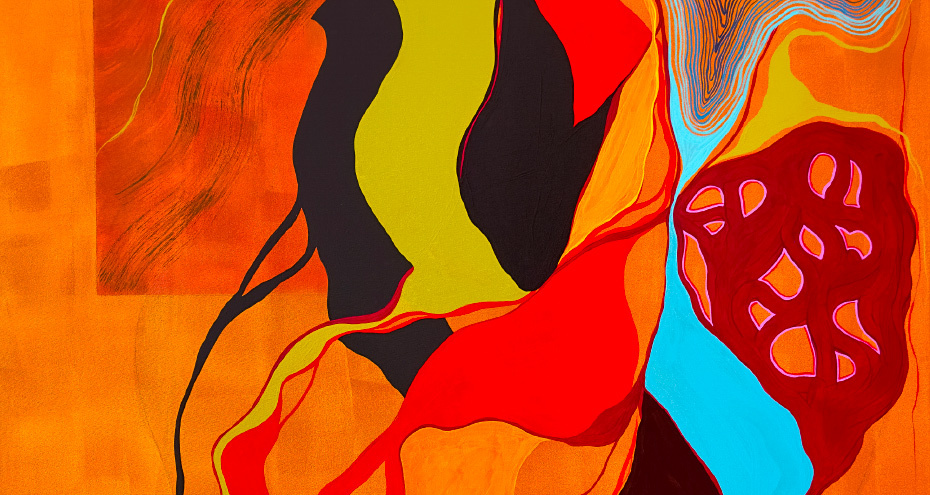
Free
Foundation
The PHI Foundation for Contemporary Art is pleased to present a solo exhibition by Moridja Kitenge Banza: Inhabiting the Imaginary

Past Event
Foundation
The exhibition marks the end of Wickramasinghe and Brisson-Darveau’s PHI Montréal public engagement residency, realized between September 2022 and June 2023

Free
Foundation
The PHI Foundation for Contemporary Art is pleased to present a solo exhibition by Moridja Kitenge Banza: Inhabiting the Imaginary
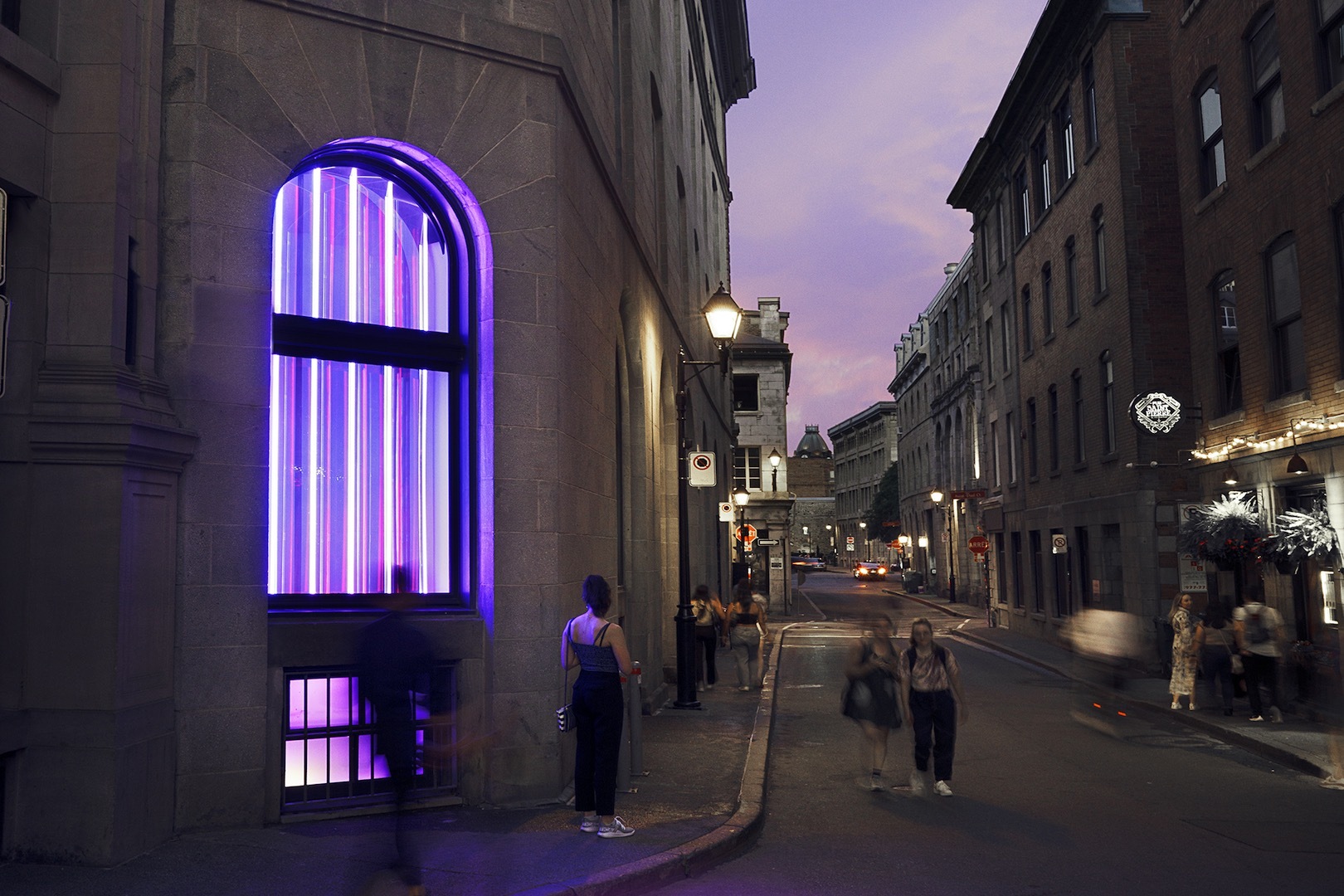
Free
Centre
The PHI Centre showcases a light installation with evolving content, adapting to the seasons and exhibitions